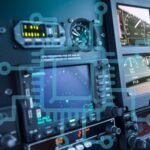Machine learning, a technological transformative force, relies on sophisticated algorithms, data, and hardware interplay. The hardware that powers machine learning is a critical component in enabling the processing and analysis of vast datasets at speeds unattainable by traditional computing systems. As the demand for intelligent applications continues to rise, the evolution of machine learning hardware is shaping the trajectory of innovation across industries.
Unleashing Parallel Processing Power
Graphics Processing Units (GPUs) have emerged as workhorses of machine learning hardware, unleashing parallel processing power that accelerates complex computations. Originally designed for rendering graphics, GPUs excel in handling the matrix calculations inherent in machine learning tasks. The parallel architecture of GPUs allows them to process multiple data streams simultaneously, making them ideal for training deep neural networks. Their role extends beyond graphics rendering, becoming key to advancing artificial intelligence.
Tailoring Hardware for Neural Networks
Tensor Processing Units (TPUs) represent a specialized breed of machine learning hardware designed explicitly for neural network computations. Developed by tech giants like Google, TPUs optimize the matrix operations crucial for deep learning. These dedicated hardware accelerators are engineered to handle the unique demands of machine learning workloads, offering efficiency gains compared to general-purpose processors. TPUs are especially relevant in cloud-based machine learning applications, where their performance prowess is harnessed for rapid model training and inference.
Bringing Intelligence to the Field
The landscape of machine learning hardware extends beyond centralized data centers. Edge devices, including smartphones, IoT devices, and embedded systems, are now equipped with specialized hardware to perform machine learning tasks locally. This decentralization of machine learning processing brings intelligence closer to the data source, reducing latency and enabling real-time decision-making. Edge machine learning hardware is vital for applications such as picture recognition, natural language processing, and predictive analytics in scenarios where immediate responses are critical.
Redefining the Possibilities
The frontier of machine learning hardware ventures into the realm of quantum computing. Quantum processors, leveraging the principles of quantum mechanics, can revolutionize machine learning by exponentially increasing processing speeds. Quantum machine learning algorithms promise to solve complex problems at an unprecedented scale, opening doors to optimization, cryptography, and pattern recognition advancements.
Conclusion
The evolution of machine learning hardware is a dynamic force propelling the capabilities of intelligent systems. GPUs and TPUs are at the forefront, optimizing performance for specific machine learning workloads. Edge devices bring intelligence to the field, while quantum computing introduces the possibility of solving previously insurmountable challenges. As machine learning continues to permeate diverse industries, the hardware innovations driving this progress are key to unlocking the full possibility of artificial intelligence. The synergy between algorithms and hardware is not merely an evolutionary step; it’s a paradigm shift shaping the intelligent future of technology.












